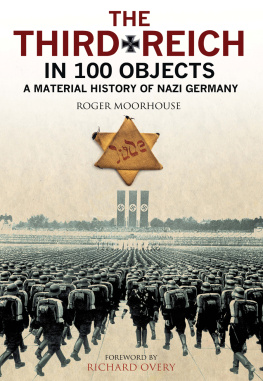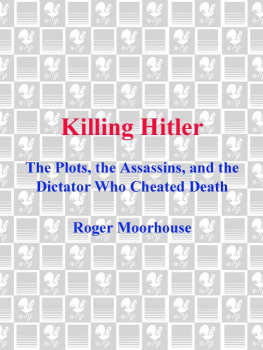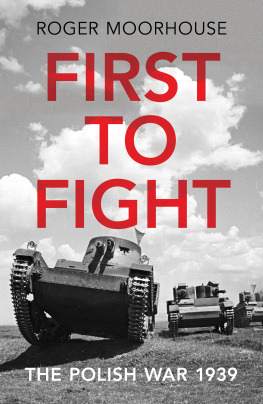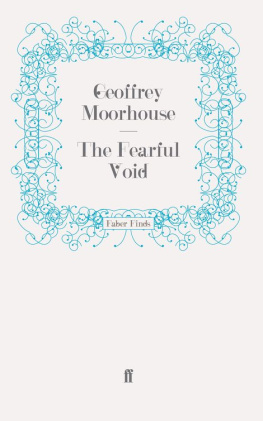Roger Moorhouse - First to Fight: The Polish War 1939
Here you can read online Roger Moorhouse - First to Fight: The Polish War 1939 full text of the book (entire story) in english for free. Download pdf and epub, get meaning, cover and reviews about this ebook. year: 2019, publisher: Vintage Digital, genre: History. Description of the work, (preface) as well as reviews are available. Best literature library LitArk.com created for fans of good reading and offers a wide selection of genres:
Romance novel
Science fiction
Adventure
Detective
Science
History
Home and family
Prose
Art
Politics
Computer
Non-fiction
Religion
Business
Children
Humor
Choose a favorite category and find really read worthwhile books. Enjoy immersion in the world of imagination, feel the emotions of the characters or learn something new for yourself, make an fascinating discovery.
- Book:First to Fight: The Polish War 1939
- Author:
- Publisher:Vintage Digital
- Genre:
- Year:2019
- Rating:4 / 5
- Favourites:Add to favourites
- Your mark:
- 80
- 1
- 2
- 3
- 4
- 5
First to Fight: The Polish War 1939: summary, description and annotation
We offer to read an annotation, description, summary or preface (depends on what the author of the book "First to Fight: The Polish War 1939" wrote himself). If you haven't found the necessary information about the book — write in the comments, we will try to find it.
First to Fight: The Polish War 1939 — read online for free the complete book (whole text) full work
Below is the text of the book, divided by pages. System saving the place of the last page read, allows you to conveniently read the book "First to Fight: The Polish War 1939" online for free, without having to search again every time where you left off. Put a bookmark, and you can go to the page where you finished reading at any time.
Font size:
Interval:
Bookmark:


Roger Moorhouse is a historian and author specialising in modern German history. He is the co-author, with Norman Davies, of Microcosm: Portrait of a Central European City, and the author of Killing Hitler: The Third Reich and the Plots Against the Fuhrer and The Devils Alliance: Hitlers Pact with Stalin.
by the same author
Microcosm:
Portrait of a Central European City
(with Norman Davies)
Killing Hitler:
The Third Reich and the
Plots against the Fhrer
Berlin at War:
Life and Death in Hitlers Capital,
193945
The Devils Alliance:
Hitlers Pact with Stalin,
193941
The Third Reich in 100 Objects
For Norman,
who planted the seed
Helmut Naujocks (Library of Congress; public domain).
Franciszek Honiok (private collection).
Gleiwitz radio station (akg-images/Interfoto).
The battleship Schleswig Holstein opens fire (Muzeum Wojska Polskiego, Warsaw).
Stuka attack on the bridge at Tczew (Narodowe Archiwum Cyfrowe).
German troops attack the Polish Post Office in Danzig (Narodowe Archiwum Cyfrowe).
German troops destroy border post at Zoppot (Narodowe Archiwum Cyfrowe).
German troops enter Poland (Muzeum II Wojny Swiatowej, Gdask).
Hitler in the Kroll Opera (Heinrich Hoffmann/Library of Congress).
Neville Chamberlain (Wellcome Collection gallery CC-BY-4.0).
Crowds in Warsaw cheer the British declaration of war (Osrdek Karta, Warsaw).
Polish cavalry (Muzeum Wojska Polskiego, Warsaw).
German Infantry assault (akg-images/ullstein bild/Pressefoto Kindermann).
Polish civilian prisoners (Muzeum II Wojny Swiatowej, Gdask).
Jews surrendering (Muzeum II Wojny Swiatowej, Gdask).
Kazimiera Mika (Julien Bryan; public domain).
German execution of civilians (akg-images).
Ciepielw massacre (akg-images).
Polish cavalry at Sochaczew (Wikimedia; public domain).
Aftermath on the Bzura (Muzeum II Wojny Swiatowej, Gdask)
Major General Tadeusz Kutrzeba (public domain).
Soviet tank in Rakow (akg-images/Universal Images Group/Sovfoto).
Soviet infantry (Laski Diffusion).
Guderian and Krivoschein (BArch, Bild 101I-121-0011A-22/Gutjahr/CC-BY-SA 3.0).
Soviet and German officers in Lww (akg-images).
Red Army men with Polish villagers (akg-images/Universal Images Group/Tass).
General Olszyna-Wilczyski (public domain).
Meeting of Wehrmacht and Red Army troops (Laski Diffusion).
Red Army guard on the river San (Muzeum II Wojny Swiatowej, Gdask).
Hitler in Danzig (Muzeum II Wojny Swiatowej, Gdask).
Naval gun at Oksywie (Muzeum II Wojny Swiatowej, Gdask).
Destroyed Polish town (Muzeum II Wojny Swiatowej, Gdask).
Refugees on a farm cart (Muzeum II Wojny Swiatowej, Gdask).
Edward migy-Rydz (public domain).
Kutrzeba surrenders Warsaw (Heinrich Hoffmann/Library of Congress).
Surrender of Modlin (Ian Sayer Archive).
German soldier guarding a pile of Polish helmets (Szczecinski Archives/East News).
Polish prisoners of the Red Army (Laski Diffusion).
Franciszek Kleeberg (public domain).
Hitlers victory parade in Warsaw (Narodowe Archiwum Cyfrowe).
Red Army parade in Lww (private collection).
Writing about a region with shifting frontiers and mixed populations can sometimes be a challenging task. For simplicity, in this book I have employed a policy of using names appropriate to the period under scrutiny. If the modern name differs from that, then it will be given in brackets at first mention.
So, to take the example of what is now the Ukrainian city of Lviv: in September 1939, it was the Polish city of Lww, so it will be rendered here as Lww (Lviv) at first mention, and simply as Lww thereafter. No political statement is thereby intended.
In addition, where there is an accepted Anglicised form such as Warsaw, Brest or Moscow then I have naturally used it throughout.
Polish words look complicated, but their pronunciation is at least consistent. All vowels are of even length, and their sound is best rendered by the English words sum (a), ten (e), ease (i), lot (o), book (u) and sit (y). Most consonants behave in the same way as in English, except for c, which is pronounced ts; j, which is soft, like the y in yes; and w, which is equivalent to an English v.
There are also a number of accented letters and combinations which are peculiar to Polish, such as:
= nasal a, hence Pitek is pronounced piontek
= nasal e, hence czyca is pronounced wenchytsa
= u, hence Krakw is pronounced krakoov
ci = ch as in cheese
= ch as in cheese
cz = a longer ch as in catch
ch = hard h, as in loch
= English w, hence Kauszyn is pronounced kawooshin
= soft n, as in Spanish maana
rz = soft j, as in French je
si = sh as in ship
= sh as in ship
sz = a longer sh as in sheer
= as rz, as in French je
= similar to , but harder.
The stress in Polish is consistent, and always falls on the penultimate syllable. So Sosabowski is pronounced so-sa-BOV-ski; Czstochowa, chen-sto-HO-va.





The Second World War in Europe began at dawn on 1 September 1939.
It shouldnt need saying, of course, but the date of the start of the largest war in human history is a subject that is shrouded in confusion across vast swathes of the globe. Every combatant nation has its own narrative and chronology. In China and Japan, for instance, the war is held to have begun on 7 July 1937, when Japanese and Chinese forces engaged following the Marco Polo Bridge Incident. For Americans, the war started on 7 December 1941, with the Japanese attack on Pearl Harbor; everything before that date is merely a curious, far-off prelude to the main event. Sometimes, such dissenting views are entirely justifiable, dictated by geography and convention; sometimes they are rather more mendacious. In the Soviet Union (and in its successor state, Russia), for example, the fiction has long been maintained that the Second World War began only with the German attack on it on 22 June 1941. Stalins earlier invasions of Poland, Finland and the Baltic States have been skilfully airbrushed from the popular narrative.
Next pageFont size:
Interval:
Bookmark:
Similar books «First to Fight: The Polish War 1939»
Look at similar books to First to Fight: The Polish War 1939. We have selected literature similar in name and meaning in the hope of providing readers with more options to find new, interesting, not yet read works.
Discussion, reviews of the book First to Fight: The Polish War 1939 and just readers' own opinions. Leave your comments, write what you think about the work, its meaning or the main characters. Specify what exactly you liked and what you didn't like, and why you think so.







